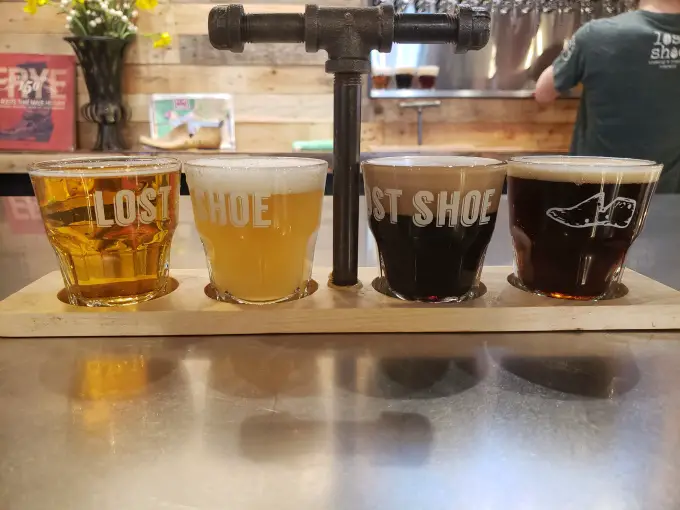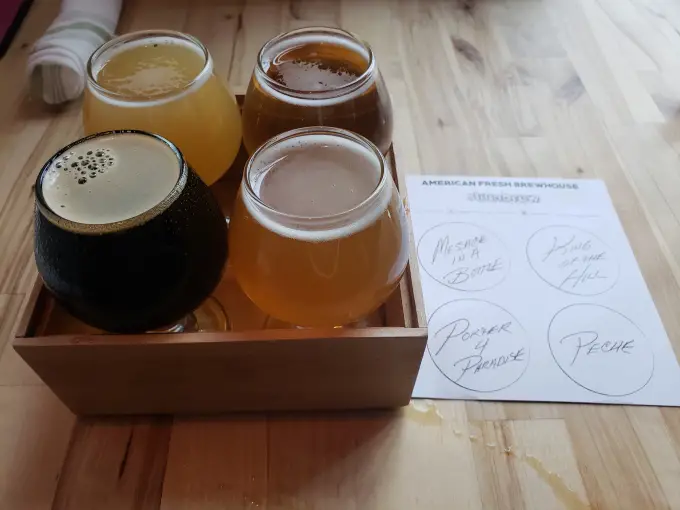
I’ve been thinking a lot about how I evaluate breweries recently. I think some of it comes with the pandemic and the struggles that breweries are facing right now. I am trying to support my favorite local places as much as I can, which means I need to think about which places belong on that “favorites” list. There are numerous factors that I weigh, including location and availability (what I can buy in distribution), but I’ve tried to support as many local favorites as I can right now when times are tight. This has gotten me thinking about how I assess the quality of a brewery, especially when a brewery is new to me. How do breweries find their way onto my favorites list, how do others become places I avoid, and how do I evaluate the vast space in between those extremes? These are a few thoughts on that topic, and I would love to hear from all of my readers about their process too!

It’s (mostly) all about the beer: Branding, social media, a cool taproom, events, and many other factors can help get new customers to visit a brewery or grab a 4-pack at a bottle shop, but none of it really matters if the beer isn’t good. When I am trying beers from a new-to-me brewery I try to keep a mental checklist of my general enjoyment of each beer with simple descriptors like world-class, great, good, mediocre, poor, or bad/flawed. The more beers that hit that good/great/world-class part of the list and the more likely I will keep buying.

One great beer can keep me coming back for more: While consistency is key to ending up on my favorites list, if I try one great beer from a brewery I am going to come back for more, and try others in the process. If that great beer is a one-off, or they can’t reproduce the recipe reliably, I will probably lose interest quickly. If it is a sign of more great beers to come then it is a sure way to end up on my favorites list.

Style diversity is important: I understand why a new brewery might focus on a particular style or set of styles. It leads to brand recognition and some styles *cough*IPA*cough* sell much better than others, which is important after the substantial financial commitment that comes with opening a brewery. To me a great brewery needs to make top-notch beer across a range of styles. I will still enjoy beers from IPA-focused places, but I get burned out on hop-bombs and will steer myself towards establishments that have shown success making dark beers, lagers and Belgians along with their hoppy concoctions.

3 (or 2, or 1) strikes and you are out: Some breweries quickly elevate themselves into my regular rotation, I try enough quality beers from them and I keep coming back for more. Others quickly become breweries I avoid, usually by accumulating strikes in the categories below. For reference, these strikes are only for the evaluation phase, if you drink enough beers from any brewery you will probably get some poor ones and every taproom has an tough employee, but if these strikes accumulate quickly it is a really bad sign.
Potential Strikes:
- Racism, misogyny, discrimination, or juvenile behavior: This is an immediate non-starter, even a brewery on my good list will fall off immediately if they display any inappropriate behavior with their operation, beer names or social media accounts.
- Bad Beer: Every brewery occasionally makes a sub-par beer, or has an issue with packaging that leads to off-flavors. When this becomes a regular problem it is a huge turnoff, and makes it unlikely that I am coming back for more.
- Dirty: There is no excuse for a dirty taproom, dirty draft lines or dirty glassware, and I have seen all three at taprooms. If you have that little respect for your customer’s experience I can’t imagine that the liquid will be consistently good.
- Staffing Issues: This is a tough one, everyone has an occasional bad day and I don’t expect a brewery to fire every server that makes an occasional rude comment. I am not easily offended, but if I have consistently poor service at a taproom I assume it is a management issue and I am disinclined to return (or buy beer from that brewery).
- Poor responsiveness: This is a bit of a tough one. I occasionally reach out to breweries with questions related to a Hoppy Boston article or occasionally about a quality issue with a beer. Most places get right back, but some don’t respond at all. I usually give them the benefit of the doubt, but when there is no response from communication from multiple channels it is a bit of a turn-off.
Give brand new places the benefit of the doubt: I usually try to give brand new breweries a bit of leeway, especially if the beer is OK/interesting but inconsistent. It can take a while for a place to get settled and learn the equipment, and many breweries that are on my favorites list weren’t hitting home runs right out of the gate. When I get inconsistent or mediocre beer at a brewery that has been open for years that is a very different story.

The places that fall in the middle are the hardest to judge: It is easy to make a judgement when a place has a bunch of amazing beer, or when it is consistently terrible. There is a huge space in the middle, and that is where I try to keep an open mind. Sometimes a good brewery makes the leap and becomes a great brewery, other places just get by on being OK. I try to give these places multiple shots over the course of time, see if things improve and they can take a step forward.
With that I will throw it to you, what criteria do you use when you judge a new brewery? Do you check out lots of new places or stick to the same group of favorites? Take the polls below and let me know on social media!
